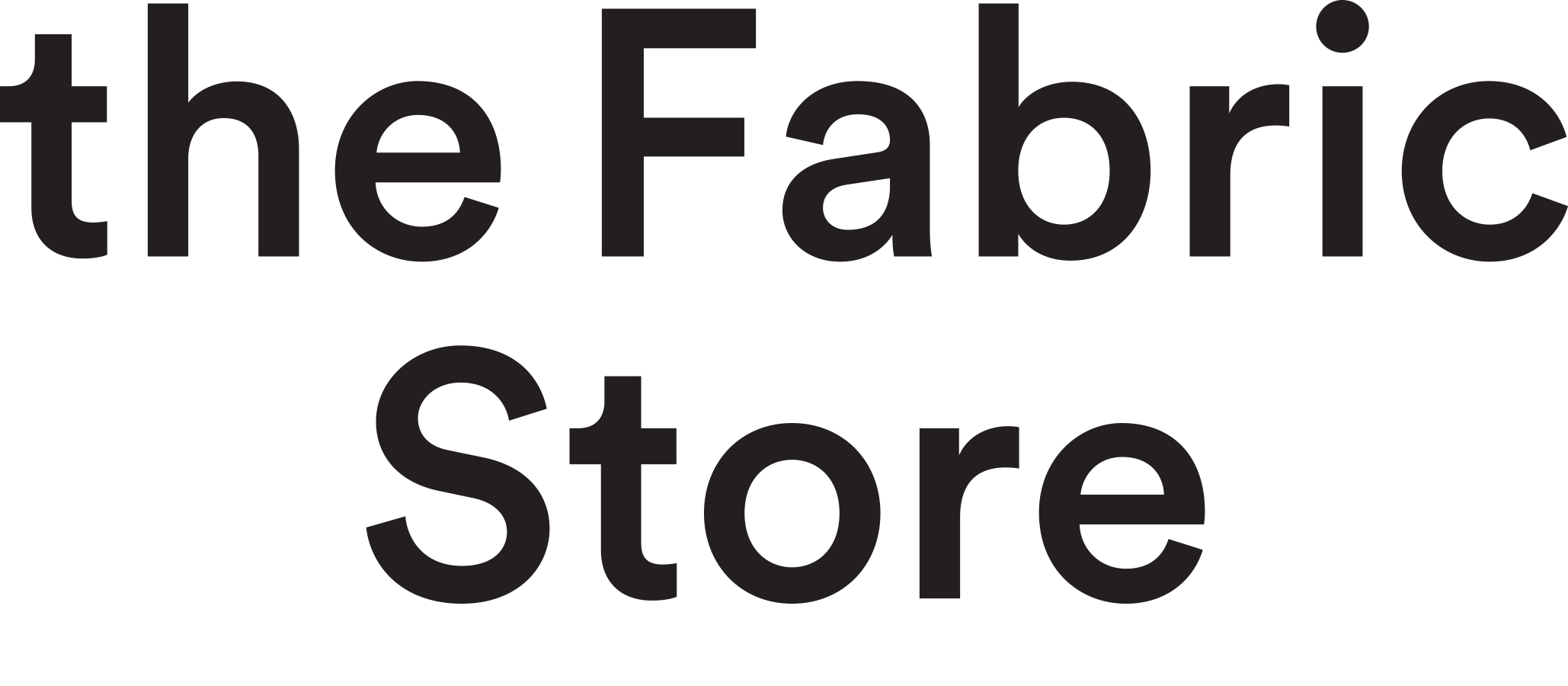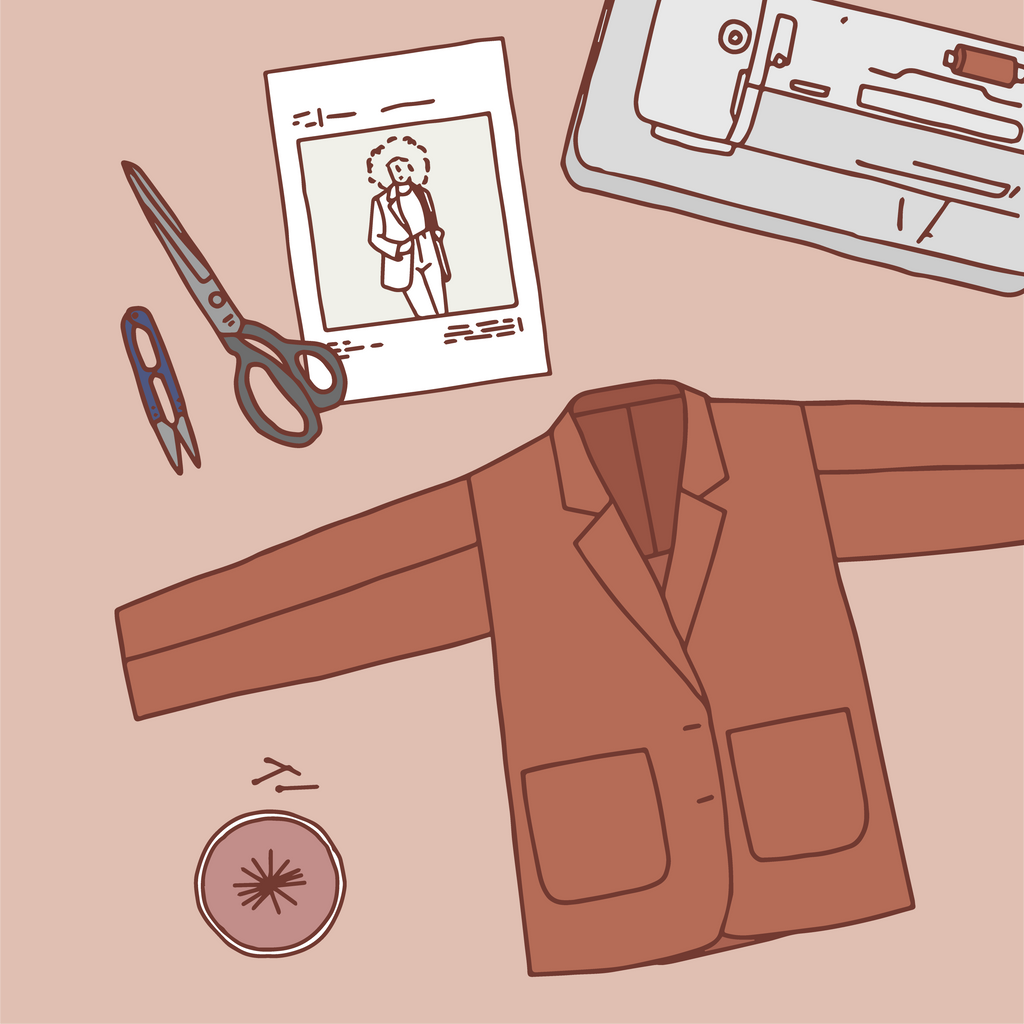Welcome to our Make by TFS Leo pattern sew along! In this post, we go through pre-pressing/interfacing steps, sewing the main body, the lining, undercollar, and sleeves, attaching the lining, and finishing touches!
Check out the Leo Blazer pattern in our Online Store here.
Don't forget you can always email us via patterns@thefabricstore.co.nz if you need advice!
P.s
Leo makes from our wonderful community are also popping up over on Instagram, follow @makebytfs and use #TFSLeo so others can check out your creations!
Step 1 — Pre-pressing and Interfacing
Before you start sewing, we recommend block fusing some pattern pieces. Block fusing is a fusing technique whereby you apply your interfacing to a section of fabric prior to cutting out the pattern pieces. It helps avoid interfacing slippage and stops your pattern pieces from stretching out of shape, and therefore ensures accuracy. It also means you only need to cut your pieces out once. Block fusing does require you to group all the pattern pieces requiring interfacing together when you cut out your pattern however, so you may require additional fabric.
If you do not wish to block fuse, you can piece fuse these pattern pieces. This means cutting out each pattern piece in both interfacing and your main fabric and then applying the interfacing to each piece separately. If you choose to piece fuse keep your pattern pieces close by for reference and make sure they don’t stretch out of shape.
The pattern pieces requiring fusing are the collar, collar stand, and front facings.
Interfacing the front is optional, depending on the weight of the fabric you are using. Take note, that as the front of the blazer is unlined, this interfacing will be visible on the inside of your blazer.
It is also optional to strip fuse the body and sleeve hems - for a lighter fabric, this can help to provide hem stability.
It is also optional to strip fuse the body and sleeve hems - for a lighter fabric, this can help to provide stability at the hem. Cut your strips of fusible interfacing, slightly wider than the depth of your hem.
Repeat the process for the back, top sleeve, and under sleeve pieces.
We strongly recommend that you use an iron to press some areas of your pieces before you begin sewing. This will help to ensure accuracy as you sew, as well as aid in giving your Leo Blazer a neat and tidy finish.
Fold the top of the pocket seam allowance over 1cm to the wrong side, then a further 4cm to the wrong side as indicated by the notches and press. The finished fold will be 4cm.
Fold up the cuff on each top sleeve 4cm, with the wrong sides together and press.
Fold up the cuff on each under sleeve 4cm, with the wrong sides together and press.
Fold up the hem on each front 5cm, with the wrong sides together and press.
Fold up the hem on each back 5cm, with the wrong sides together and press.
Fold up the cuff on each top sleeve lining 2.5cm, with the wrong sides together and press.
Fold up the cuff on each under sleeve lining 2.5cm, with the wrong sides together and press.
Now it is time to start sewing the main body of your blazer!
Step 2 — Sewing the Main Body
We will start our Leo Blazer by sewing the patch pockets.
Fold the top of the pocket seam allowance 1cm towards the wrong side, then a further 4cm as indicated by the notches. Edge stitch and then press.
Stitch around the raw edge of the pocket piece at 1 cm. Clip into the seam allowance at the rounded corners. Now, fold back the raw edge 1cm and press using the stitched line to help guide you.
You may want to create a template to help when pressing the rounded bottom edge of the pocket.
Pin the pocket to the front as indicated by the markings on the pattern with the wrong side of the pocket to the right side of the front.
Edge stitch the pocket into place following the stitching line.
Repeat for the other front pocket.
With the right sides together, pin the backs together at the centre back. Sew the seam at 1cm then press the seam open.


